Ray-Ban Sunglasses Guide : How to Spot An Authentic Ray-Ban Aviator and Where To Buy One Online
Around three weeks ago, I asked my fashion-forward friends on Facebook for some advice on which new sunglasses I should get with my Php 10,000.
I'm thinking about traveling a lot next year and I'm already starting to look for cool pairs of shades that I can throw in my bag to accompany me, my gadgets, and my buddy in our adventures.
"Just get another Ray-Ban, Mac. It's a classic," one of them told me.
Another said, "You can never go wrong with Ray-Ban."
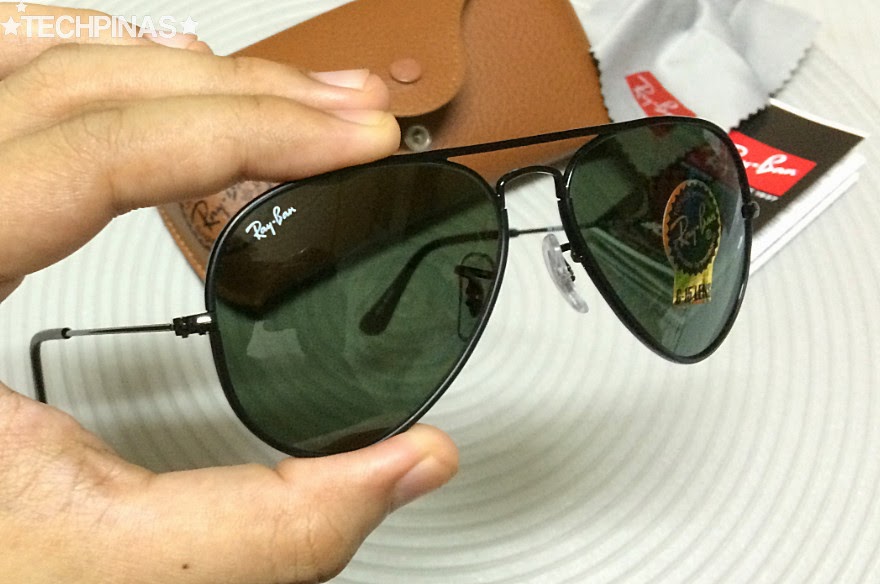
When you really think about: They're right.
Even if the market is now flooded with so many new brands of sunglasses - some are cool and expensive, others are cheap and are mere copies of more high-end ones - Ray-Bans remain to be at the top of the pack in terms of both sales and popularity.
I mean, I'm not really all that into 'fashion' but I get it; The fact that so many A-list celebrities and musicians from the past 60 years - ranging from Billy Joel to Bruno Mars, Tom Cruise to Liam Hemsworth - have worn and continue to wear Ray-Bans is a true testament to these sunglasses' lasting and epic style and coolness.

But the success of Ray-Ban also has its down sides.
For one, ever since the brand took off, there have been many, many bad people taking advantage of it by making knock-offs to make quick profit. The situation has gotten so bad that it's now become a tad challenging to distinguish the genuine article from a fake one.

Good thing there are online selling websites like GlassesOnline, which guarantee that all of the products they're selling are 100% authentic. I've heard many cool things about this site so when I finally decided to follow my friends' advice to just get new pairs of Ray-Ban, that's where I went.
I got myself two Ray-Ban Classics (their biggest hits even before the company was bought by the Italian Luxottica Group): The Wayfarer and this, the Aviator. To be specific, it's the 55mm RB3025-JM Aviator Full Color, Black -- and it currently sells for Php 7,185 at GlassesOnline Philippines.

"Aviator sunglasses, or "pilot's glasses", were originally developed in 1936 by Ray-Ban for pilots to protect their eyes while flying. Aviators were given their name due to their original intention of protecting aviator's eyes. Ray-Ban began selling the glasses to the public a year after they were developed. [...] They are characterised by dark, often reflective lenses having an area two or three times the area of the eyeball, and very thin metal frames with double or triple bridge (so-called ″bullet hole″) and bayonet earpieces or flexible cable temples that hook behind the ears. The original design featured G-15 tempered glass lenses, i.e., neutral gray, transmitting 15% of incoming light. [...] The large lenses are not flat but slightly convex. The design attempts to cover the entire range of the human eye and prevent as much light as possible from entering the eye from any angle." [Source]
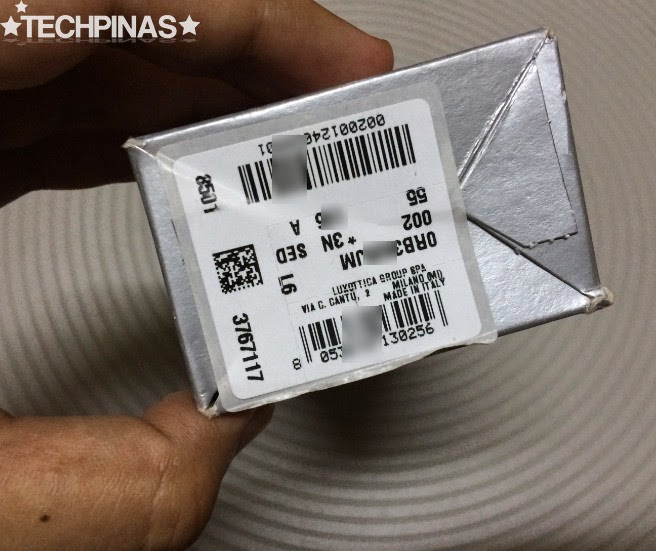
I placed my order via the website on October 10, 2014 (that's a Friday) and the package arrived at my doorstep on October 13. Not bad, right?

Since I have the authentic item here, I thought of sharing these photos for those who might be interested to know more about Ray-Ban and be familiar with the 'hidden' identifying marks of genuine Aviator sunglasses.
I don't want to pretend like I'm an expert on Ray-Bans - I'm really just a big fan - so I'm letting these images speak for themselves.


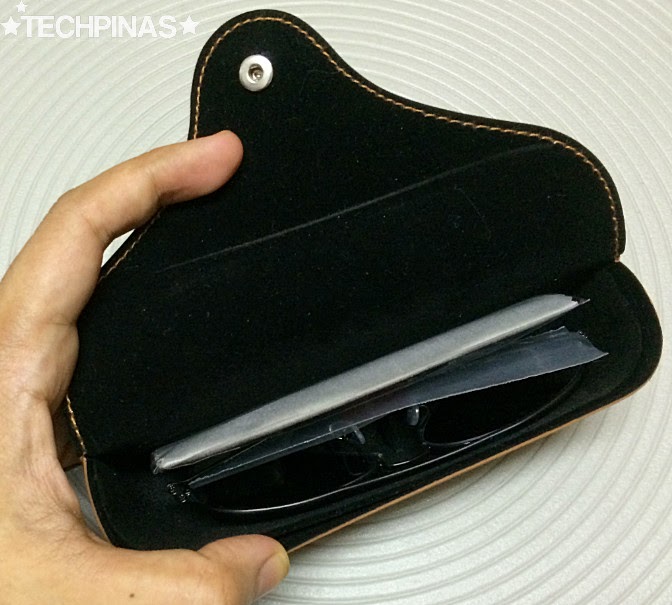






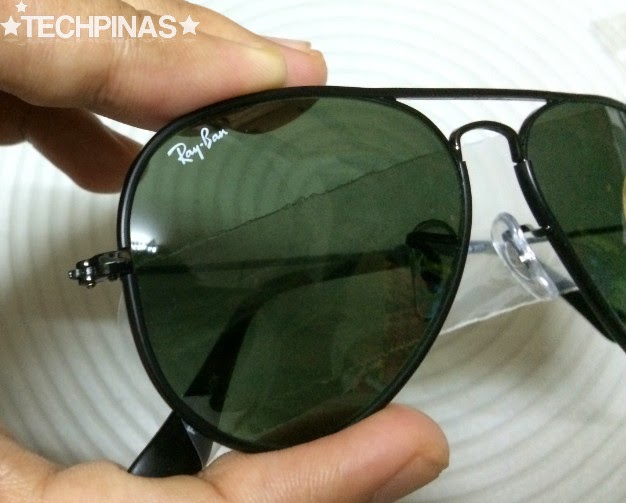


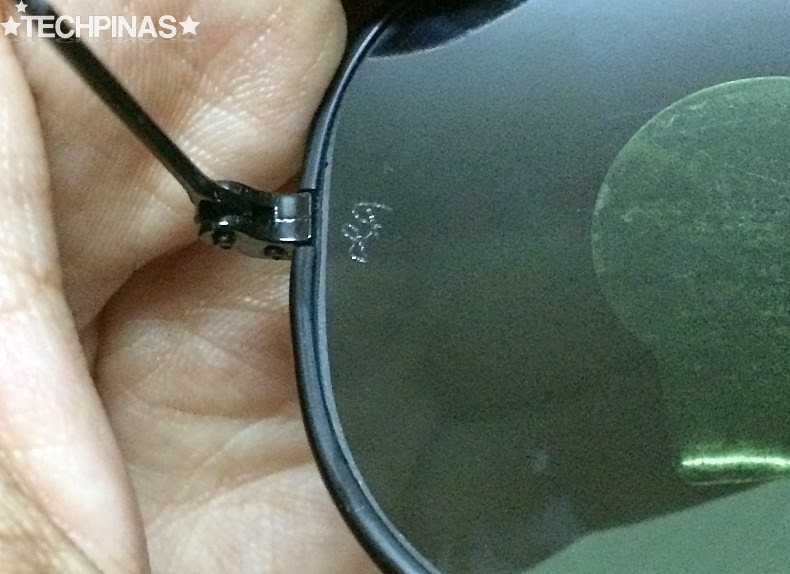




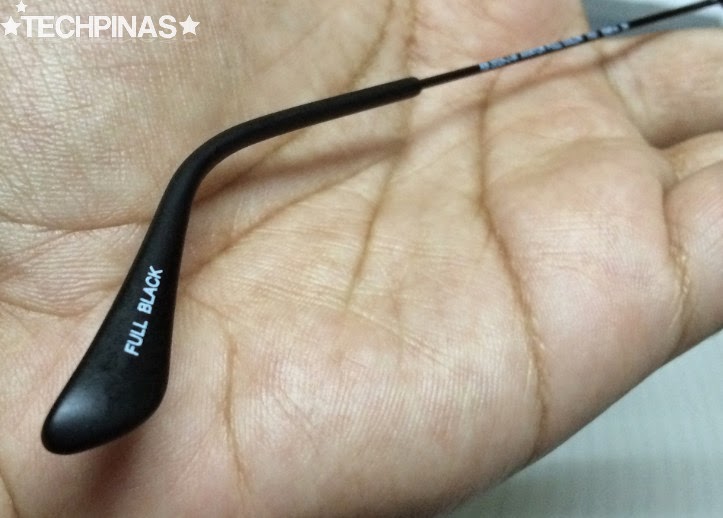

There you go, TP Friends! Those are the unique and patented identifying marks of genuine Ray-Ban Aviators. Next week, I'll do a similar post for my Ray-Ban Wayfarers! Stay tuned!
I'm thinking about traveling a lot next year and I'm already starting to look for cool pairs of shades that I can throw in my bag to accompany me, my gadgets, and my buddy in our adventures.
"Just get another Ray-Ban, Mac. It's a classic," one of them told me.
Another said, "You can never go wrong with Ray-Ban."

When you really think about: They're right.
Even if the market is now flooded with so many new brands of sunglasses - some are cool and expensive, others are cheap and are mere copies of more high-end ones - Ray-Bans remain to be at the top of the pack in terms of both sales and popularity.
I mean, I'm not really all that into 'fashion' but I get it; The fact that so many A-list celebrities and musicians from the past 60 years - ranging from Billy Joel to Bruno Mars, Tom Cruise to Liam Hemsworth - have worn and continue to wear Ray-Bans is a true testament to these sunglasses' lasting and epic style and coolness.

But the success of Ray-Ban also has its down sides.
For one, ever since the brand took off, there have been many, many bad people taking advantage of it by making knock-offs to make quick profit. The situation has gotten so bad that it's now become a tad challenging to distinguish the genuine article from a fake one.

Good thing there are online selling websites like GlassesOnline, which guarantee that all of the products they're selling are 100% authentic. I've heard many cool things about this site so when I finally decided to follow my friends' advice to just get new pairs of Ray-Ban, that's where I went.
I got myself two Ray-Ban Classics (their biggest hits even before the company was bought by the Italian Luxottica Group): The Wayfarer and this, the Aviator. To be specific, it's the 55mm RB3025-JM Aviator Full Color, Black -- and it currently sells for Php 7,185 at GlassesOnline Philippines.

"Aviator sunglasses, or "pilot's glasses", were originally developed in 1936 by Ray-Ban for pilots to protect their eyes while flying. Aviators were given their name due to their original intention of protecting aviator's eyes. Ray-Ban began selling the glasses to the public a year after they were developed. [...] They are characterised by dark, often reflective lenses having an area two or three times the area of the eyeball, and very thin metal frames with double or triple bridge (so-called ″bullet hole″) and bayonet earpieces or flexible cable temples that hook behind the ears. The original design featured G-15 tempered glass lenses, i.e., neutral gray, transmitting 15% of incoming light. [...] The large lenses are not flat but slightly convex. The design attempts to cover the entire range of the human eye and prevent as much light as possible from entering the eye from any angle." [Source]

I placed my order via the website on October 10, 2014 (that's a Friday) and the package arrived at my doorstep on October 13. Not bad, right?

Since I have the authentic item here, I thought of sharing these photos for those who might be interested to know more about Ray-Ban and be familiar with the 'hidden' identifying marks of genuine Aviator sunglasses.
I don't want to pretend like I'm an expert on Ray-Bans - I'm really just a big fan - so I'm letting these images speak for themselves.

This is the carrying case. My Ray-Ban Aviator comes in Full Black and interestingly, the color of its case is tan. So if someone tells you authentic Black Ray-Bans should always come in Black Case, don't believe it. That's not true.

The outer part if made of faux leather; Notice the fine, precise side-stitching and the perfectly printed "Ray-Ban by Luxottica" badge.

The internal part has soft, velvet lining that protects the lenses from being scratch.

The cleaning cloth and documentation are together in one plastic case.

The cleaning cloth is neither too big nor too large. I'd say it's around 6-inches by 6-inches.

Notice that the Ray-Ban logo on the cleaning cloth is darker the one printed on the manual/mini pamphlet.

This pamphlet - that's free from typographical errors - contains information (in various languages) on how to use, clean, and protect your Ray-Ban sunglasses.

"G-15 XLT lenses block 100% of all UV rays and allow only 15% of the visible light to pass through them. Composed of green and gray pigments, this lens has a lower contrast than the B-15 XLT lens allowing for the color and brightness of objects to be softer and more natural."


The Ray-Ban logo is printed with white ink on the upper right corner of the lens covering your right eye.

The golden G-15 Lens sticker, which is really one of the easiest things to fake.

There's an RB logo that's engraved or etched at the back of the lens covering your left eye, near the end piece. You might want to look for this as it's one of the harder identifying marks to copy.

The RB logo, from another angle.

The model name and number are neatly printed with white ink on the inner part of the sunglasses' left temple...

while you'll find the full Ray-Ban logo, 'Made in Italy', R, and CE marks on the right temple.

Both nose pads should have the RB logo.

You'll find 'RAY-BAN' and the product number engraved underneath the sunglasses' top bar; Again, this is one of the harder identifying marks to copy and fake.

The color of the sunglasses is clearly printed with white ink and in all caps on the inner part of the left temple tip.

There you go, TP Friends! Those are the unique and patented identifying marks of genuine Ray-Ban Aviators. Next week, I'll do a similar post for my Ray-Ban Wayfarers! Stay tuned!

